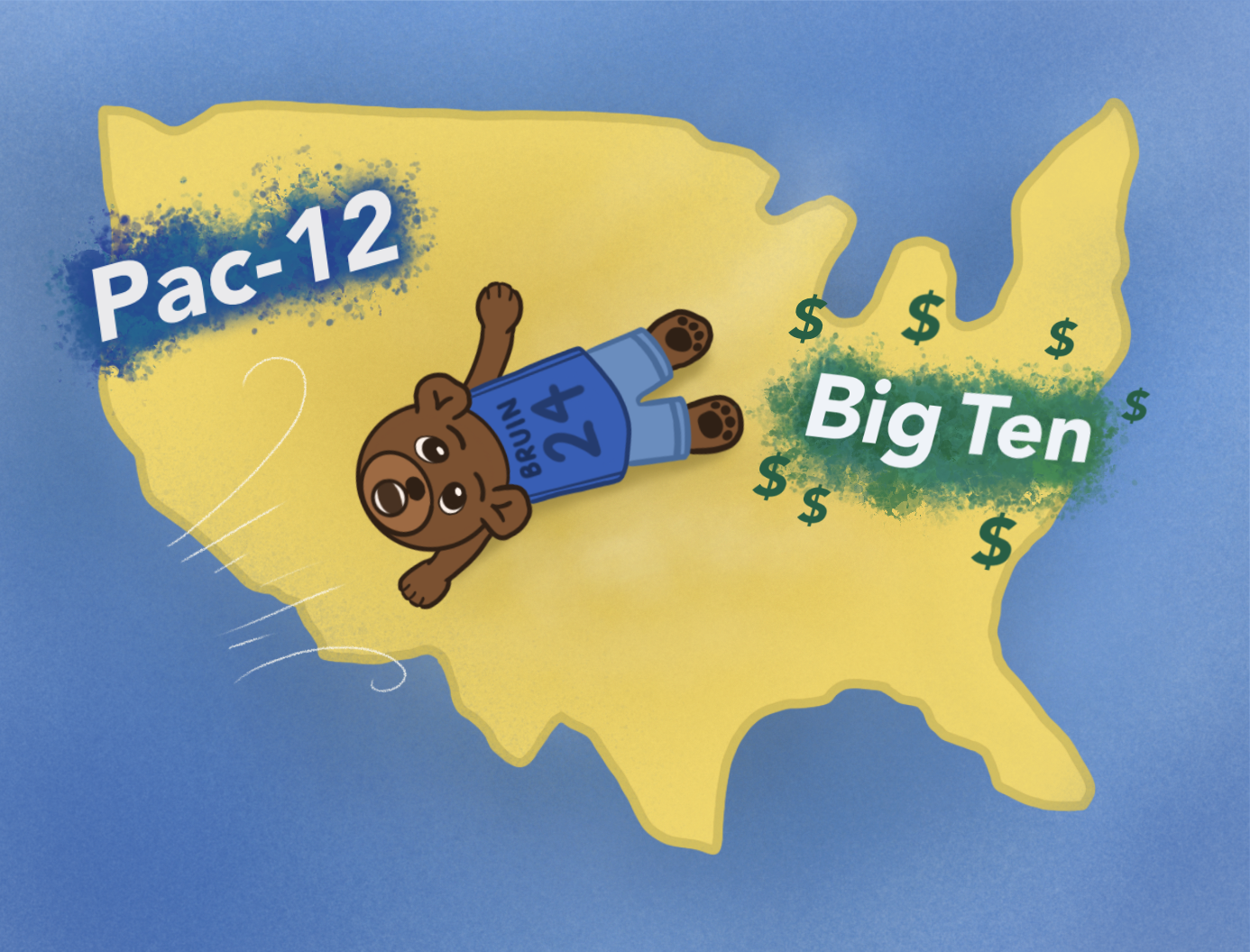Joseph’s Diagnosis: Big Ten move helps university, hurts UCLA football in the process

(Ashley Ko/Illustrations Director)

By Joseph Crosby
Sept. 21, 2023 9:24 p.m.
Football dominates the collegiate sports landscape. It’s not arguable, it’s a fact.
The top programs routinely sell out their home stadiums, with the best of the best pushing six-figure attendance numbers weekly.
The most-watched non-NFL sporting event in 2022 was the College Football Playoff National Championship between Georgia and Alabama – both schools that regularly put 90,000 fans in seats on game day.
It’s a scale that not even March Madness can compete with.
And as the nascent 2023 football season gets underway, it also bids a final farewell to the Pac-12 Conference.
UCLA and USC, the original Pac-12 departures announced last summer, are joining the Big Ten next year alongside Oregon and Washington. Colorado, Utah, Arizona and Arizona State are heading to the Big 12. California and Stanford – two schools not on the Atlantic coast – will join the Atlantic Coast Conference.
Oregon State and Washington State are the only two universities without a new home for 2024. The Power Five is about to become the “More Powerful Four,” and it wouldn’t be a shock if that number gets even smaller in the years to come.
Even if the schools won’t admit it, these decisions are money driven. Specifically, it’s media deals signed between conferences and broadcast networks worth billions that will end up paying out nine-figure amounts to member schools. For UCLA, that number will start at roughly $60 million with the potential to nearly double by the end of the seven-year contract.
Football dominates the collegiate sports landscape, and it controls the revenue generated by schools. Seventy percent of a university’s athletics earnings can be attributed to football.
UCLA is going to get paid when it joins the Big Ten – a move that was made during the window of uncertainty surrounding a new Pac-12 media deal, one that still has not developed.
Change is on the horizon, and it will be felt in full force when UCLA football starts its season in late August, alongside the other fall sports. So, what does that change mean for the football program driving the Bruins’ exit from the Pac-12?
About 15 months ago, I wrote a column about how UCLA’s move to the Big Ten didn’t consider the well-being of its student-athletes, something I still believe. Travel, particularly for teams that play more than 12 weekly games, will have immense repercussions on the academic and athletic performances of the players. More time spent traversing the country is bound to make keeping up with school harder while also fatiguing players with long flights and bus rides.
But beyond the day-to-day impact of travel increases and journeys to unfamiliar environments, the Big Ten move will pit the Bruins against new sets of teams.
In football, that will mean continuing to contend with USC, Washington and Oregon, while adding powerhouse schools like Ohio State and Michigan to the list of potential opponents. With UCLA already facing an uphill battle in their current conference, the addition of perennial CFP contenders to the mix could make reaching the top of the Big Ten a task of Sisyphean proportions.
It’s unclear what kind of impact the Big Ten move will have on recruiting. On one hand, it’s a bigger stage against big-name schools and could be appealing to those looking to prove themselves. On the other hand, the advantage of conference opponents concentrated on the West Coast is gone, and prospects who want to travel less may be inclined to go to the Southeastern Conference or Big 12.
But football is driving this change, and one of the few UCLA programs that lacks a national championship isn’t likely to change that fact with a conference move.
The university may be improving its finances, but it’s the team that helped spur the shift that may suffer the most.

